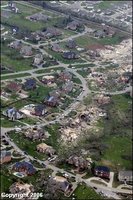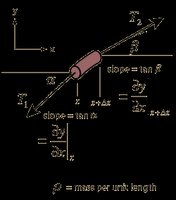New Blog:
From now on, please visit my new blog: AviationChatter.com
Labels: aviation, aviation chatter, flying, flying airplanes, learn to fly
Labels: aviation, aviation chatter, flying, flying airplanes, learn to fly
 We had some bad weather last week. The storm system that hit Tennessee last Friday spawned several Tornadoes and destroyed portions of many mid-state cities. With eight dead in the upscale Woodhaven subdivision, the city of Gallatin was hardest hit.
We had some bad weather last week. The storm system that hit Tennessee last Friday spawned several Tornadoes and destroyed portions of many mid-state cities. With eight dead in the upscale Woodhaven subdivision, the city of Gallatin was hardest hit.
 South Korea's Air Force is searching for professional gamers to aide in the development of war-simulation games, said officials.
South Korea's Air Force is searching for professional gamers to aide in the development of war-simulation games, said officials. The e-mail arrived today. I am going to be invited to be a research assistant at MTSU this summer. The goal: break the speed of light through sound pulses. As long as the Einstein police don't pull me over, this will be great.
The e-mail arrived today. I am going to be invited to be a research assistant at MTSU this summer. The goal: break the speed of light through sound pulses. As long as the Einstein police don't pull me over, this will be great. Practice vs. understanding: which is more important? Should students seek understanding early in the education game, or is it better to apply mathematical tools under the assumption that understanding will come with experience? According to Keith Devlin, NPR's The Math Guy, simple methodical practice is best. In a recent article published on the Mathematical Association of America's website, he suggests that practice is the natural method by which we learn any skill:
Practice vs. understanding: which is more important? Should students seek understanding early in the education game, or is it better to apply mathematical tools under the assumption that understanding will come with experience? According to Keith Devlin, NPR's The Math Guy, simple methodical practice is best. In a recent article published on the Mathematical Association of America's website, he suggests that practice is the natural method by which we learn any skill:"When we learn a new skill, initially we simply follow the rules in a mechanical fashion. Then, with practice, we gradually become better, and as our performance improves, our understanding grows. Think, for example, of the progression involved in learning to play chess, to play tennis, to ski, to drive a car, to play a musical instrument, to play a video game, etc. We start by following rules in a fairly mechanical fashion. Then, after a while, we are able to follow the rules proficiently. Then, some time later, we are able to apply the rules automatically and fluently. And eventually we achieve mastery and understanding. The same progression works for mathematics, only in this case, as mathematics is constructed and carried out using our language capacity, the initial rule-following stuff is primarily cognitive-linguistic."This approach is contradictory to my current method for studying mathematics (or any skill). Instead of seeking to fully understand a topic, perhaps it is more efficient to work problems in a mechanical fashion, slowly building understanding with time and practice.
 Based on the findings of a Kentucky blogger, the Fibonacci sequence manifests itself in Tool's current album, Lateralus. In the first instance, Maynard James Keenan sings the title track by keeping each line's syllables in step with the sequence. For example:
Based on the findings of a Kentucky blogger, the Fibonacci sequence manifests itself in Tool's current album, Lateralus. In the first instance, Maynard James Keenan sings the title track by keeping each line's syllables in step with the sequence. For example:black [1]Maynard's mathematical musings don't end there. Drummer Danny Carey also plays the sequence ranging from one to thirteen throughout the song.
then [1]
white are [2]
all I see [3]
in my infancy [5]
red and yellow then came to be [8]
reaching out to me [5]
lets me see [3]
there is [2]
so [1]
much [1]
more and [2]
beckons me [3]
to look through to these [5]
infinite possibilities [8]
as below so above and beyond I imagine [13]
drawn outside the lines of reason [8]
push the envelope [5]
watch it bend [3]